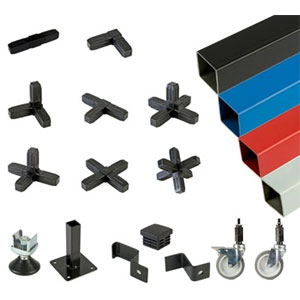I got a good deal on a 100W solar panel and 3000W full wave sine inverter a few months ago, so thought it may be fun to build a DIY portable power bank. I could do with something that could provide mains power when camping or using the telescope outside, so it does have some practical use as well as being really fun  .
.
I've mostly build an aluminium frame with plywood panels, here's a quick CAD drawing of the trolley without the panels attached. You can see the reinforced base for a 100aH deep cycle gel battery, plus a 2nd level for the 3000W inverter. There's a hinge opening on the front to access the inverter plug sockets, plus 2 handles on the top to help manoeuvre it. All of the other areas will be enclosed with 6mm plywood (painted grey):

Here's the actual build so far (partially deconstructed!):

I've got a battery meter (that uses a shunt resistor), some 25mm&35mm cable, indicator LEDs, isolator switch and several USB sockets. I'll get a panel attached to the top that will include all of the switches and displays.
I was wondering if anyone had thoughts on wiring considerations for this build. My thinking was as follows:
 .
.
I've mostly build an aluminium frame with plywood panels, here's a quick CAD drawing of the trolley without the panels attached. You can see the reinforced base for a 100aH deep cycle gel battery, plus a 2nd level for the 3000W inverter. There's a hinge opening on the front to access the inverter plug sockets, plus 2 handles on the top to help manoeuvre it. All of the other areas will be enclosed with 6mm plywood (painted grey):
Here's the actual build so far (partially deconstructed!):
I've got a battery meter (that uses a shunt resistor), some 25mm&35mm cable, indicator LEDs, isolator switch and several USB sockets. I'll get a panel attached to the top that will include all of the switches and displays.
I was wondering if anyone had thoughts on wiring considerations for this build. My thinking was as follows:
- Battery is full isolated via isolator switch - can't be charged, power the inverter or any of the smaller displays without being enabled.
- Shunt battery meter to get active voltage reading under load (always active so I can monitor for undervoltage)
- 2 x MC4 solar connectors with 1m cables bundled behind panel, so that I can quickly charge battery from solar panel/controller.
- Backup mains charger for keeping battery topped up over winter
- 100A fuse after isolator switch (lower than max inverter output, but I never want to go anymore than half load as I'll be using mixed inductive/resistive loads).


